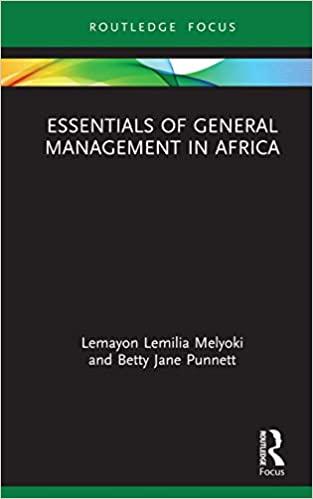Question
Paul Simard was delighted when Forrest Industries. offered him the job of manager at its Jonquiere, Quebec plant. Simard was happy enough managing a small
Paul Simard was delighted when Forrest Industries. offered him the job of manager at its Jonquiere, Quebec plant. Simard was happy enough managing a small metal stamping plant with another company, but the headhunters invitation to apply to the plant manager job at one of Canadas leading metal fabrication companies was irresistible. Although the Jonquiere plant was the smallest of Forrest Industries 15 operations across Canada, the plant manager position was a valuable first step in a promising career.
One of Simards first observations at Forrest Industries Jonquiere plant was that relations between employees and management were strained. Taking a page from a recent executive seminar that he attended on building trust in the workplace, Simard ordered the removal of all time clocks from the plant. Instead, the plant would assume that employees had put in their full shift. This symbolic gesture, he believed, would establish a new level of credibility and strengthen relations between management and employees at the site.
Initially, the 250 production employees at the Jonquiere plant appreciated their new freedom. They felt respected and saw this gesture as a sign of positive change from the new plant manager. Two months later, however, problems started to appear. A few people began showing up late, leaving early, or take extended lunch breaks. Although this represented only about five percent of the employees, others found the situation unfair. Moreover, the increased absenteeism levels were beginning to have a noticeable effect on plant productivity. The problem had to be managed.
Simard asked supervisors to observe and record when the employees came or went and to discuss attendance problems with those abusing their privileges. But the supervisors had no previous experience with keeping attendance and many lacked the necessary interpersonal skills to discuss the matter with subordinates. Employees resented the reprimands, so relations with supervisors deteriorated. The additional responsibility of keeping track of attendance also made it difficult for supervisors to complete their other responsibilities. After just a few months, Forrest Industries found it necessary to add another supervisor position and reduce the number of employees assigned to each supervisor.
But the problems did not end there. Without time clocks, the payroll department could not deduct pay for the amount of time that employees were late. Instead, a letter of reprimand was placed in the employees personnel file. However, this required yet more Forrest Industries.
time and additional skills from the supervisors. Employees did not want these letters to become a permanent record, so they filed grievances with their labour union. The number of grievances doubled over six months, which required even more time for both union officials and supervisors to handle these disputes.
Nine months after removing the time clocks, Paul Simard met with union officials, who agreed that it would be better to put the time clocks back in. Employee-management relations had deteriorated below the level when Simard had started. Supervisors were burnt out from overwork. Productivity had dropped due to poorer attendance records and increased administrative workloads.
A couple of months after the time clocks were put back in place, Simard attended an operations meeting at Forrest Industries headquarters in Toronto. During lunch, Simard described the time clock incident to Liam Jackson, Forrest Industries plant manager in Northern British Columbia. Jackson looked surprised, then chuckled. Jackson explained that the previous BC plant manager had done something like that with similar consequences six or seven years ago. The previous manager had left some time ago, but Jackson heard about the BC timeclock from a supervisor during the managers retirement party two months ago.
I guess its not quite like lightning striking the same place twice, said Simard to
Jackson. But it sure feels like it.
in a tabular form, state the Implementation Plan
- This is a solid plan for moving forward to make your recommendation a reality.
- Identifies major actions and resources required Addresses the questions - What? Who? When? How? as per below:
- Indicates timing and/or dependency of actions In what order to actions need to be taken?
- Defines measurement of actions How will you measure success? How will you ensure that your implementation is unfolding as planned?
- Monetized forecast of recommendation How much will it cost? What are the resource requirements?
- Describes a Plan B No plan survives first contact! Where are the potential problems in your implementation plan? What will you do if something doesnt go as originally planned?
- Break down your recommendations into action items. For example, it is insufficient to say you would do training on a particular topic. What are the steps for actually conducting training (e.g., needs analysis, training development, training delivery)?
Structure
- Your case analysis should flow logically from beginning to end. In other words, I should not be surprised by something coming up for the first time in the later sections of the paper. For example, if you are suggesting an action in the implementation plan that doesnt relate to the recommendations youve made, perhaps you need to revisit your recommendations (and maybe even your alternatives or problems) to see if youve missed something.
Step by Step Solution
There are 3 Steps involved in it
Step: 1

Get Instant Access to Expert-Tailored Solutions
See step-by-step solutions with expert insights and AI powered tools for academic success
Step: 2

Step: 3

Ace Your Homework with AI
Get the answers you need in no time with our AI-driven, step-by-step assistance
Get Started


